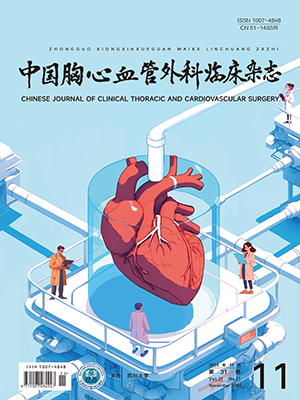Objective To determine the application values of gene chip technique in cardiovascular surgical clinical and research work. Microarray for gene expression profiles was used to screen out the differentially expressed genes during cardiopulmonary bypass(CPB) in peripheral blood mononuclear cell. By doing these, it was hoped that some clues in inflammatory response during CPB could be found out. Methods The patients’ oxygenated bloods were drawn immediately before onset and termination of CPB. Peripheral blood mononuclear cell (PBMC) were obtained from heparinised blood by Ficoll gradient centrifugation. The differentially expression was measured using BD AtlasTM cDNA Expression Arrays. The candidate genes were corroborated by semiquantitative reverse transcriptionpolymerase chain reaction (RT-PCR). Results Gene chip technique was successfully used in CPB study. The gene expression profiles of cytokines of PBMC during CPB were screened out. Interleukin 6 and Wnt5a were the differentially expressed genes. But the validity using semiquantitative RT-PCR found no statistically difference(P=0.888,0.135). Conclusion Microarray technique has positive application values in the study of cytokines during CPB. cDNA microarray for gene expression profiles can primarily screen out differentially expression genes during CPB. These genes may be engaged in inflammation and other pathophysiological reactions during CPB. PBMC is not the major source of cytokines during CPB.
Citation: QI Hongwei,ZHU Langbiao,WU Mingying,et al .. The Differentially Expressed Cytokines of Peripheral Blood Mononuclear Cell after Cardiopulmonary Bypass. Chinese Journal of Clinical Thoracic and Cardiovascular Surgery, 2008, 15(5): 374-378. doi: Copy




